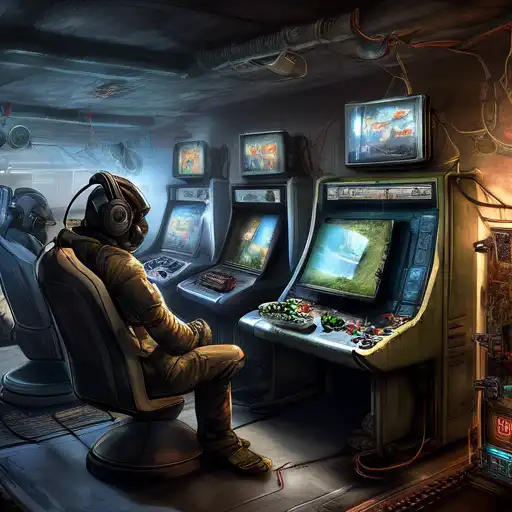The Dawn of Gaming Technology
The journey of gaming technology began in the mid-20th century, with simple games like Tennis for Two and Pong laying the foundation for what would become a multi-billion-dollar industry. These early games, though primitive by today's standards, were revolutionary at the time, offering interactive entertainment that was previously unimaginable.
The Rise of Home Consoles
In the 1970s and 1980s, the introduction of home consoles like the Atari 2600 and the Nintendo Entertainment System (NES) brought gaming into the living room. This era saw the birth of iconic franchises such as Super Mario Bros. and The Legend of Zelda, which remain popular to this day. The ability to play games at home marked a significant shift in how people interacted with technology for leisure.
The Advent of 3D Graphics
The 1990s ushered in the era of 3D graphics, with consoles like the Sony PlayStation and the Nintendo 64 leading the charge. Games such as Super Mario 64 and Tomb Raider showcased the potential of 3D environments, offering players immersive worlds to explore. This period also saw the rise of PC gaming, with titles like Doom and Half-Life pushing the boundaries of what was possible in gaming.
The Online Gaming Revolution
With the advent of the internet, gaming underwent another transformation. Online multiplayer games like World of Warcraft and Counter-Strike created communities of players who could interact and compete with each other from anywhere in the world. This era also saw the rise of digital distribution platforms like Steam, making games more accessible than ever before.
The Future of Gaming: Virtual Reality and Beyond
Today, gaming technology continues to evolve at a rapid pace. Virtual reality (VR) and augmented reality (AR) are opening up new possibilities for immersive gameplay, with devices like the Oculus Rift and PlayStation VR leading the way. Meanwhile, advancements in artificial intelligence (AI) and cloud gaming promise to further revolutionize the industry, making games more realistic and accessible than ever before.
Conclusion
The evolution of gaming technology is a testament to human creativity and innovation. From simple pixelated games to complex virtual realities, gaming has come a long way in a relatively short period of time. As technology continues to advance, the future of gaming looks brighter than ever, with endless possibilities for new and exciting experiences.
